1. Great Barrier Reef Lenyap dalam 20 Tahun
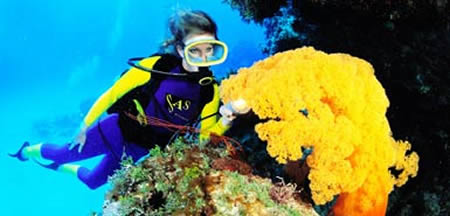 Naiknya air laut akibat pemanasan global dalam 20 tahun akan menenggelamkan gugusan karang ajaib ini. Charlie, mantan kepala peneliti di Australian Institute of Marine Science mengatakan pada The Times: "Tidak ada harapan, Great Barrier akan lenyap 20 tahun lagi atau lebih. Sekali karbon dioksida (CO2) menyentuh level seperti yang diprediksi antara tahun 2030 dan 2060, seluruh karang akan lenyap. Hal ini didukung para peneliti karang dan juga semua organisasi terkait lainnya. Ini sudah kritis dan beginilah kenyataanya."
Naiknya air laut akibat pemanasan global dalam 20 tahun akan menenggelamkan gugusan karang ajaib ini. Charlie, mantan kepala peneliti di Australian Institute of Marine Science mengatakan pada The Times: "Tidak ada harapan, Great Barrier akan lenyap 20 tahun lagi atau lebih. Sekali karbon dioksida (CO2) menyentuh level seperti yang diprediksi antara tahun 2030 dan 2060, seluruh karang akan lenyap. Hal ini didukung para peneliti karang dan juga semua organisasi terkait lainnya. Ini sudah kritis dan beginilah kenyataanya."

2. Hutan Amazon Akan Berubah Menjadi Gurun
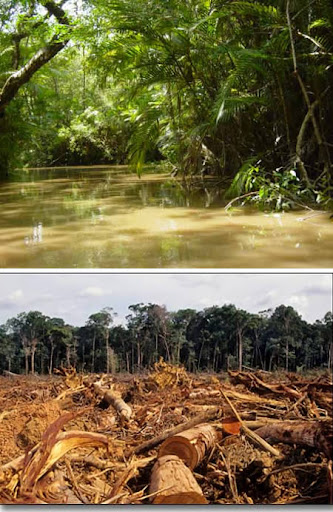
Memiliki jutaan spesies dan cadangan 1/5 air bersih dunia, hutan Amazon merupakan hutan hujan tropis terbesar di dunia. Tapi pemanasan global dan penggundulan hutan membalikkan fungsi hutan sebagai penyerap karbon dan merubah 30-60 persen hutan menjadi padang rumput kering. Proyeksi-proyeksi menunjukkan hutan ini bisa lenyap menjelang tahun 2050.
3. Gurun Sahara Akan Menghijau
Para ilmuwan melihat tanda-tanda bahwa gurun sahara dan wilayah di sekitarnya menghijau akibat makin meningkatnya curah hujan. Hujan ini mampu merevitalisasi wilayah gersangnya sehingga menarik komunitas petani. Kecenderungan menyusutnya gurun ini dijelaskan oleh model-model iklim, yang memprediksi kembalinya ke kondisi yang merubah Sahara menjadi padang rumput subur seperti sekitar 12 ribu tahun yang lalu.
4. Angin Topan Akan Bertiup Lebih Dahsyat
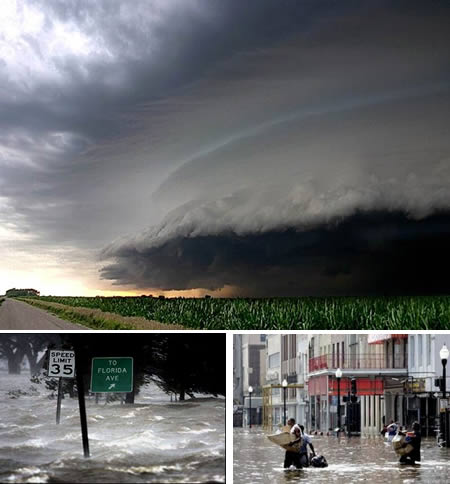
Belum bisa dijelaskan apakah global warming bertanggung jawab atas terjadinya badai Katrina. Tapi ada indikasi-indikasi bahwa global warming akan menciptakan badai-badai berkategori 5 - badai Katrina sendiri berkategori 4 saat menghantam Lousiana. Kekuatan badai dimulai dari adanya air hangat dan model-model ramalan menunjukkan badai di masa depan akan menjadi lebih dahsyat seiring dengan naiknya temperatur lautan. Global warming juga membuat badai-badai itu lebih destruktif dengan naiknya permukaan laut yang memicu banjir yang lebih besar di wilayah pesisir.
5. London Tenggelam Tahun 2100

Tidak hanya karang dan pulau-pulau landai yang terancam global warming. Faktanya sebuah ancaman besar juga menghantui wilayah kota besar di wilayah pantai yang beresiko tenggelam di bawah air akibat naiknya permukaan laut. Lusinan kota-kota dunia termasuk London dan New York bisa saja lenyap tenggelam menjelang akhir abad ini, menurut penelitian yang menyebutkan global warming akan mengakibatkan naiknya permukaan air laut lebih cepat dari yang diprediksi sebelumnya. London termasuk kota besar yang beresiko tinggi seperti digambarkan dalam sebuah film tahun 2007 berjudul "Flood". Menurut para ahli kota ini akan tenggelam tidak sampai 100 tahun lagi.
6. Hewan-hewan yang Menyusut
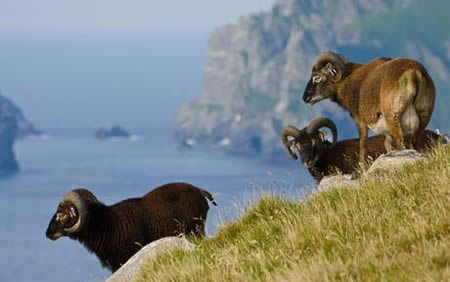
Studi baru menyebutkan bahwa bahwa spesies-spesies hewan mengalami penyusutan rata-rata hingga 50 persen dari massa tubuhnya dalm 30 tahun terakhir. Penelitian awal terhadap domba menduga bahwa musim dingin yang lebih pendek dan ringan membuat domba-domba itu tidak menambah berat badannya untuk bertahan hidup pada tahun pertama hidupnya. Faktor seperti ini dapat juga mempengaruhi populasi ikan. Para peneliti menyebutkan perubahan iklim ini bisa mengganggu rantai-rantai makanan, dimana predator di puncak rantai makanan yang paling terpengaruhi karena menyusutnya mangsa.
7. Kepulauan Indonesia Kehilangan Ribuan Pulaunya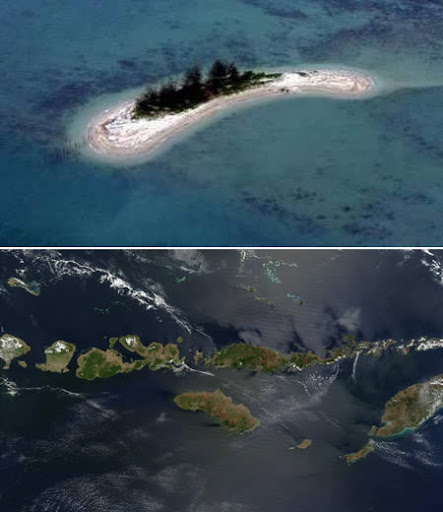
Akibat global warming, sedikitnya 2000 pulau kecil di kepulauan Indonesia mungkin akan hilang sebelum yahun 2030 danhal ini diperparah sebagai konsekuensi penambangan liar dan aktivitas lain yang merusak lingkungan. Indonesia hingga saat ini telah kehilangan sedikitnya 24 dari 17.500 pulau-pulau di wilayahnya.
8. Global Warming Bisa Memicu Terorisme
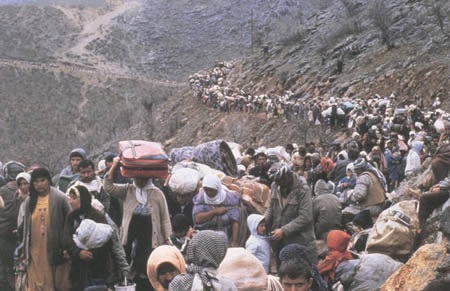
Global warming bisa menciptakan kondisi ketidakstabilan di negara-negara miskin, sehingga memicu terjadinya migrasi dan menjadi tempat subur berkembangnya terorisme. Kondisi negara yang tidak stabil akibat iklim yang keras dan tidak menentu menyebabkan banyak orang meninggalkan negaranya dan karena tekanan beberapa di antaranya bisa melakukan tindak terorisme. Belum lagi masalah akibat penolakan dari negara yang didatangi para imigran ini.
9. Mencairnya Pegunungan Alpen
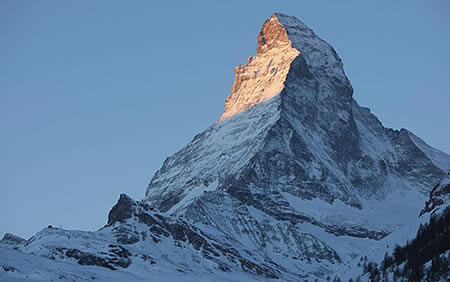
Tahun-tahun belakangan ini terlihat pengurangan intensitas salju di wilayah-wilayah rendah, menyusutnya volume glacier (sungai es), dan juga meningkatnya cairnya wilayah es beku. Hal ini berdampak langsung pada aktivitas turisme di musim dingin. Diprediksi glacier-glacier itu akan hilang antara tahun 2030 dan 2050. Itali dan Swiss telah memutuskan untuk menggambar ulang batas-batas wilayah mereka akibat berkurangnya glacier-glacier di Alpine dan menyapu tanda batas-batas wilayah dua negara itu.
10. Tenggelamnya Kepulauan Maldiva
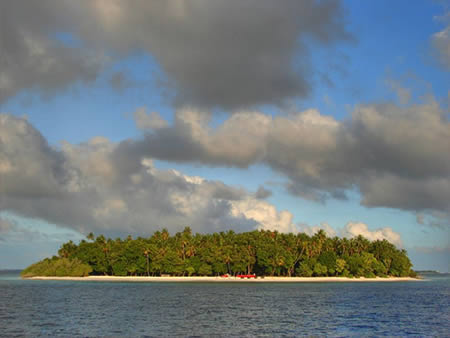
Wilayah kepulauan rendah dan flat yang dikelilingi lautan diprediksi akan ditenggelamkan oleh lautan yang mengelilinginya itu. Hal ini merupakan berita buruk bagi para penghuninya dan juga bagi dunia pariwisata yang mengandalkan pantai-pantai berpasir putih dengan air hangatnya. Para peneliti memberi waktu tidak lebih dari seratus tahun sebelum kepulauan ini bebar-benar lenyap ditelan samudera.
Mengerikan memang, meski hampir semua dari kita mungkin tidak akan mengalaminya, tetapi anak cucu kitalah yang akan menghadapinya. Mungkin sebagian orang menganggap isu global warming hanyalah bualan saja, tapi mungkin sebagian dari kita telah merasakan naiknya temperatur di wilayah masing-masing jika dibandingkan kira-kira 10 tahun yang lalu. Penulis sendiri kurang lebih 10-15 tahun yang lalu pernah tinggal di salah satu kota yang waktu itu hawanya selalu sejuk bahkan menjelang tengah hari sekalipun. Dan tahun-tahun belakangan kota itu di siang hari panas teriknya tidak kalah dengan kota Jakarta. Memang belum ada yang membuktikannya sebagai akibat global warming, tapi satu hal sudah jelas, sudah waktunya manusia memikirkan kembali untuk menghargai alam dan bersahabat dengan alam dalam segala aktivitasnya termasuk dalam strategi pembangunan, baik infrastruktur maupun industri.





 Contrasting views of the Lagoon nebula. Top: Infrared observations from the Paranal Observatory in Chile cut through dust and gas to reveal a crisp view of baby stars within. Bottom: A similar view in visible light appears opaque.
Contrasting views of the Lagoon nebula. Top: Infrared observations from the Paranal Observatory in Chile cut through dust and gas to reveal a crisp view of baby stars within. Bottom: A similar view in visible light appears opaque. 


















